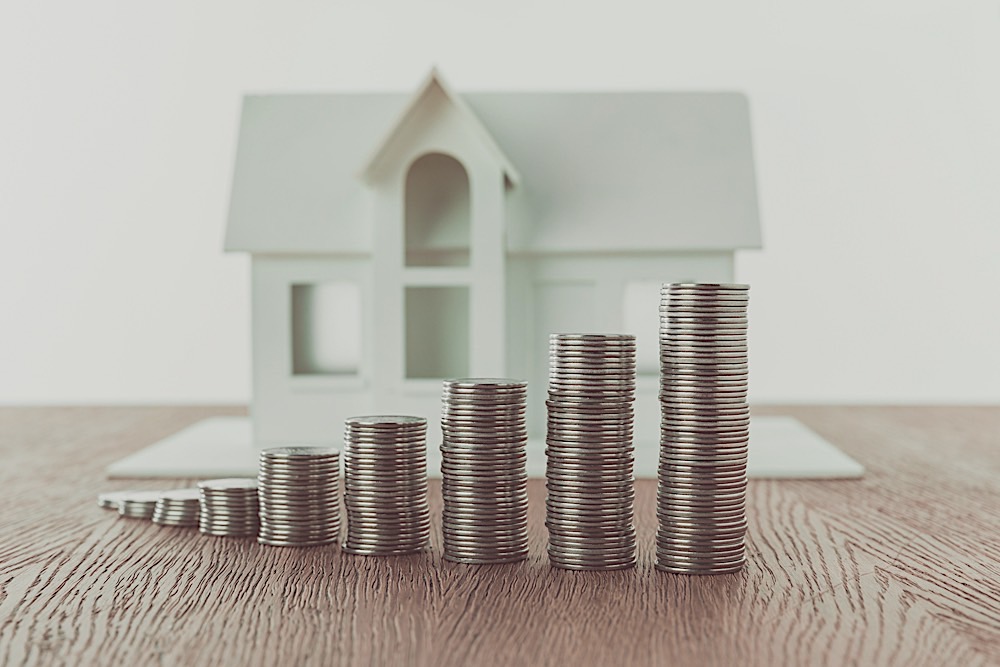Key Takeaways:
In its simplest form, refinancing a mortgage is nothing more than paying off an existing loan and replacing it with another one. At its pinnacle, refinancing has become synonymous with several advantages: lower interest rates, shorter mortgage terms, and immediate access to capital through home equity. It is worth noting, however, that refinancing isn’t free, nor can just anyone do it. Not unlike applying for a mortgage, anyone looking to refinance will encounter traditional closing costs, that is, unless they seek out a no-closing-cost refinance. Otherwise known as a no-cost refinance, a no-closing-cost refinance grants borrowers unique opportunities that traditional refinances can’t. Let’s take a minute to first understand what it means to refinance without closing costs and why (or why not) some would want to do so.
What Is A No-Closing-Cost Refinance?
A no-closing-cost refinance isn’t all that different from a traditional refinance, with a few exceptions. Most notably, as their name suggests, no-closing-cost refinance strategies allow borrowers to postpone the traditional upfront closing costs usually associated with loans. In exchange for deferring the closing costs, however, borrowers are given two subsequent options: they can either finance the closing costs they would have originally paid into the impending loan or pay a higher interest rate on the same principal balance.
What Will A No-Closing-Cost Refinance Cost?
Not unlike every other form of financing, no-closing-cost refinancing comes complete with a lot of additional fees and costs. Many times, the additional fees and costs can mean the difference between a good underwriting and a bad one. Therefore, it may literally pay for borrowers to familiarize themselves with the following costs associated with no-closing-costs refinances:
-
Loan Origination Fee
-
Appraisal Fee
-
Title Fees
-
VA Funding Fee
-
Mortgage Insurance
-
Credit Report Fee
-
Discount Points
-
Adverse Market Fee
-
Increased Mortgage Rates
[ Thinking about investing in real estate? Register to attend a FREE online real estate class and learn how to get started investing in real estate. ]

Loan Origination Fee
As their names suggest, loan origination fees are charged to borrowers to establish an account with a lender. More specifically, however, loan origination fees are upfront charges incurred to process a new loan application. In their simplest form, they are compensation for actually underwriting the loan and typically range somewhere in the neighborhood of 0.5% – 1% of the loan amount.
Appraisal Fee
Not unlike when a property is sold, any attempt to conduct a no-closing-cost refinance will require a subsequent appraisal. In doing so, the lender will gain a more accurate understanding of the home’s true market value and, therefore, how much they are comfortable refinancing. That said, an appraiser will need to visit the physical property and conduct an appraisal, costing homeowners approximately $300 – $500 for their services.
Title Fees
A title is a legal right to ownership of a property, not to be confused with a deed (a legal document that transfers property ownership from a seller/grantor to a buyer/grantee). Simply put, the title suggests who owns the property and who is legally permitted to sell it. It is worth noting, however, that property titles are susceptible to everything from human error and neglect to oversight and malicious activity. Consequently, there are countless reasons a property’s title may be inaccurate, and it’s in the best interest of prospective buyers and refinancers to make sure everything is in order. Of course, making sure the respective title is free of any discrepancies will require things like a title agent or title insurance, not the least of which coincide with their own fees.
VA Funding Fee
Those looking to conduct a no-closing-cost refinance on a home originally purchased with a VA Home Loan can expect to incur additional fees. Most notably, anyone who refinances a VA Home Loan will be expected to pay a percentage of the new (refinanced) loan back to the Department of Veterans Affairs. Depending on the type of mortgage being refinanced, the fee will cost refinancers somewhere around 2.3% – 3.6% of the loan amount.
Mortgage Insurance
Most homeowners are aware of what mortgage insurance is. However, most associate mortgage insurance with the inability to put a least 20% down at signing. In the event buyers cannot come up with a 20% down payment, they will be required to pay mortgage insurance because they constitute more of a risk to the lender. With that in mind, lenders will also underwrite a no-closing-cost refinance with an upfront mortgage insurance premium on FHA loans, to the tune of 1.75% of the loan amount. Anyone using an FHA Streamline to refinance from one FHA loan to another will incur a much more modest fee of 0.01%.
Credit Report Fee
When homeowners took on their original loan, the loan originator used their credit report to verify whether or not they were viable borrowers. Using the credit report as a track record of repayments, lenders can assess the risk of loaning money to individuals. Unfortunately, pulling the original credit report incurs a fee on the borrower. Anyone looking to use a no-closing-cost refinance can expect to run into another credit report fee. If for nothing else, the lender will need to reaffirm the borrower’s status. For the lender to run a report, borrowers will need to front anywhere from $25 – $50.
Discount Points
Executing a no-closing-cost refinance gives borrowers the option to buy points. Therefore, discount points aren’t a necessary fee; borrowers can “buy” them if they want to reduce their impending monthly payments. To lower monthly mortgage obligations, borrowers will buy points in exchange for a lower interest rate. Typically, one point will run borrowers about 1% of their loan amount. Borrowers can buy multiple points, so the cost of purchasing discount points will depend on how many are purchased. Again, buying points is optional, so not everyone who conducts a no-closing-cost refinance will run into this fee.
Adverse Market Fee
No-closing-cost refinance candidates can thank the Coronavirus for tacking on additional costs. Namely, the “adverse market fee” was added to most refinances to protect Fannie Mae and Freddie Mac from future disasters which may cause an immediate downturn. In addition, the Federal Housing Finance Agency has started charging 0.5% on loans worth $125,000 or more.
Increased Mortgage Rates
Lenders are in the business of making money, and they are pretty good at it. As a result, it shouldn’t surprise anyone to learn that lenders always take more than they give. In this case, lenders will approve a no-closing-cost refinance, but they will simultaneously increase the interest rate if funds aren’t added to the principal.

How To Cut Refinance Costs
Dealing with traditional lending institutions has become synonymous with an abundance of fees and additional costs. Nobody should be surprised to learn of the fees outlined above, as they keep banks in business. That said, borrowers are awarded several ways to actually reduce upfront mortgage expenses; they just need to know where to look:
-
some fees can be waived under the right circumstances. Most lenders, for example, will waive appraisal fees for existing customers or even those who have managed to build up a significant amount of equity. Case in point: Lenders need to remain competitive, and many are willing to waive smaller fees to retain more customers. At the very least, borrowers won’t get what they don’t ask for.
-
If the person seeking a no-closing-cost refinance is an existing customer, the bank may be willing to lift the loan origination fee. After all, it’s increasingly difficult to justify charging a fee for starting an account that already exists.
-
When all is said and done, the easiest way to cut refinance costs is to shop around. Again, lenders need to remain competitive to attract customers, which means borrowers have an inherent degree of leverage. Simply taking the time to look for lenders with the best products and lowest fees will result in a great deal of savings.
Pros Of A No-Closing-Cost Refinance
The benefits of choosing to use a no-closing-cost refinance include, but are not limited to:
-
Homeowners planning on living in the home for approximately five years or less will most likely pay less in interest than the amount they would have paid in upfront closing costs.
-
A no-closing-cost refinance can save borrowers money who need immediate access to capital. At the very least, a no-closing-cost refinance will typically cost borrowers less than a home equity loan.
-
Borrowers do not need to put any money down in order to qualify for a no-closing-cost refinance.
Cons Of A No-Closing-Cost Refinance
The drawbacks of choosing to use a no-closing-cost refinance include, but are not limited to:
-
Homeowners planning on living in the home for more than five years will most likely pay more in interest than the amount they would have paid in upfront closing costs.
-
Less-qualified borrowers may have to pay private mortgage insurance, in addition to other additional fees and costs.
When To Use A No-Closing-Cost Refinance
No-closing-cost refinance options are best reserved for homeowners who plan to sell or move (or refinance) within about a five-year window. While interest rates may be higher on no-closing-cost refinances, closing costs may be easily offset by homeowners who move within five years. Consequently, those who move after a short period of time will avoid paying closing costs as a large, upfront sum. Additionally, living in the home for just five years means interest won’t accrue more than the closing costs.
Conversely, homeowners who intend to stay where they are for more than five years may want to look elsewhere. The extra interest associated with no-closing-cost refinance options will most certainly exceed the amount they would have paid in upfront closing costs.
Summary
The concept of a no-closing-cost refinance is similar to a traditional refinance: each seeks to replace an existing mortgage with a new one. That said, there are subtle differences worth acknowledging. Perhaps most importantly, a no-cost refinance allows borrowers to defer the upfront closing costs and finance them into monthly payments (or pay a higher interest rate on the new loan). At first glance, a no-closing-cost refinance offers a convenient way for borrowers to remain more liquid at the start of a new loan. However, the real benefits are introduced when the duration of the loan is factored into the equation. If borrowers expect to live in the home for less than five years, a no-closing-cost loan could save them more money by paying a higher interest rate over a shorter period of time. Over a period of five years, there’s a good chance the higher interest rate will cost less than the original closing costs would have.
Ready to start taking advantage of the current opportunities in the real estate market?
Click the banner below to take a 90-minute online training class and get started learning how to invest in today’s real estate market!
The information presented is not intended to be used as the sole basis of any investment decisions, nor should it be construed as advice designed to meet the investment needs of any particular investor. Nothing provided shall constitute financial, tax, legal, or accounting advice or individually tailored investment advice. This information is for educational purposes only.


